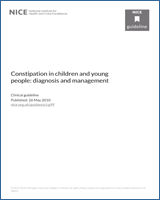| Inspection of perianal area: appearance, position, patency, etc |
|
Abnormal appearance/position/patency of anus: fistulae, bruising, multiple fissures, tight or patulous anus, anteriorly placed anus, absent anal wink
|
| Abdominal examination |
|
|
| Spine/lumbosacral region/gluteal examination |
|
Abnormal: asymmetry or flattening of the gluteal muscles, evidence of sacral agenesis, discoloured skin, naevi or sinus, hairy patch, lipoma, central pit (dimple that you can’t see the bottom of), scoliosis
|
| Lower limb neuromuscular examination including tone and strength |
|
Deformity in lower limbs such as talipes Abnormal neuromuscular signs unexplained by any existing condition, such as cerebral palsy
|
| Lower limb neuromuscular examination: reflexes (perform only if ‘red flags’ in history or physical examination suggest new onset neurological impairment) |
|
|
